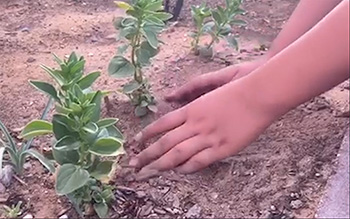Blog Posts | July 31, 2020
Share ThisMoving Beyond the Classroom: How a Training Initiative Sparked a Storytelling Project Amid the Pandemic

All great ideas need a spark to get the fire going. Tamara Grybko and Emily Stovel’s inspiration began with a program funded by the Institute of Museum and Library Services.
Grybko was working as a program data and evaluation manager at Explora—a science center and children’s museum in Albuquerque, New Mexico—when she took part in Cohort 1 of the IMLS Community Catalyst Initiative. To facilitate the initiative, IMLS contracted with the Asset-Based Community Development (ABCD) Institute, housed at DePaul University, as a partner in the work. As a member of the Explora project team, Grybko participated in the trainings, which focused on organizing local resources to pull together for community change.
After she left her position at Explora, Grybko continued to include the asset-based community development concepts she learned from CCI in her work as an independent consultant. When the COVID-19 pandemic reached the U.S. in March, she connected with Stovel, director of the Bernalillo Community Museum, through a Zoom meeting for community educators. After discussing ways to engage and employ local creative sector individuals—especially those in the museum and film industries—they pulled their networks together.
“We started thinking about what’s happening in our little corner of the world, and how we can work together to support both our community as well as those in professions that were immediately impacted by the COVID-19 shutdown orders,” Grybko said. “There are so many people in our state who are so energized and creative and want to stay engaged, and we’re trying to find ways that we can support each other in that.”
It was clear that people in the museum and film industries were losing jobs due to the pandemic. At the same time, the pair knew that those creative platforms would soon be sorely missed by people who rely on them for cultural enrichment and personal entertainment.
“It seemed like a perfect opportunity to bring those two sectors together to provide digital resources in a time where everyone was going online,” Stovel explained.
With funding from the City of Albuquerque’s Creative Economy Relief Program, Grybko and Stovel—in collaboration with Andres Barrera Guerrero, a museum educator, and Ted Kinyak, a film illustrator and editor—focused their attention on working with youth to expand their digital storytelling capabilities through video to highlight resilience amid the COVID-19 pandemic.
“When we get together, a lot of the conversations with the youth have much more to do with what these individuals are experiencing and the stories they want to tell, rather than the technical aspects of how to make a video,” Stovel said. “That really speaks to the community catalyst work that IMLS encouraged. It’s very small-scale, direct, and leverages the power of people who have experience, who know how to work in digital environments, and who can think as a museum educator across disciplines to help young people think about how to tell their stories.”
Grybko’s expertise in evaluation is well-suited for this new line of work. She asks the youth thought-provoking questions that can help bring their stories to life and perhaps even inspire other people. Connecting back to her ABCD training, she says at its core, this project—titled Albuquerque Digital Connections—is rooted in a group of individuals with vocational overlap coming together in the midst of a crisis to think about and plan for ways they could continue to use their skills to work in partnership with community residents.
“The nature of the stories that the kids are telling about their pandemic experiences are incredibly powerful. They are the stars—the center of this work,” Grybko said. “Coming together in this strange new digital world and watching relationships being built through this environment has been so rewarding to see through this project.”
